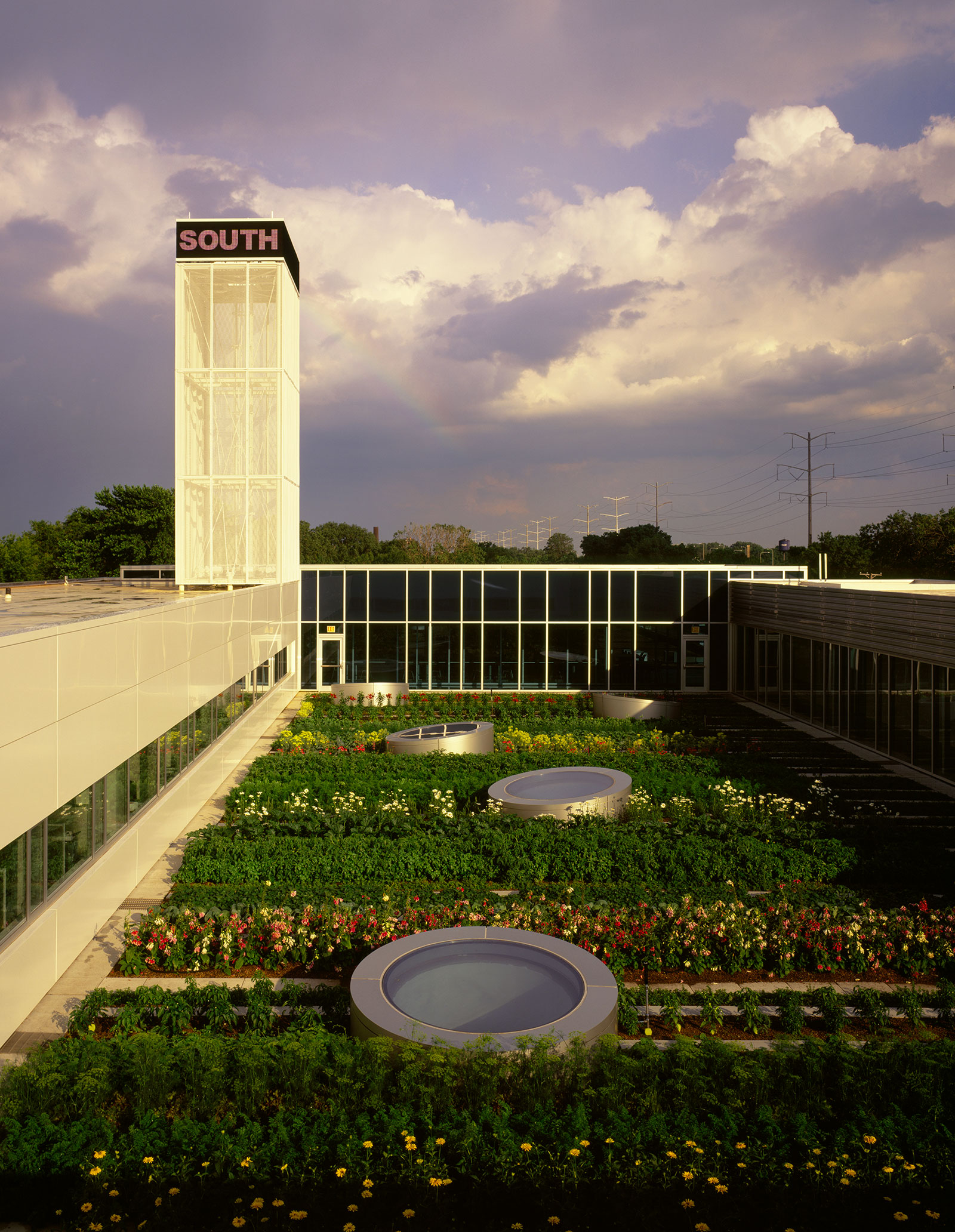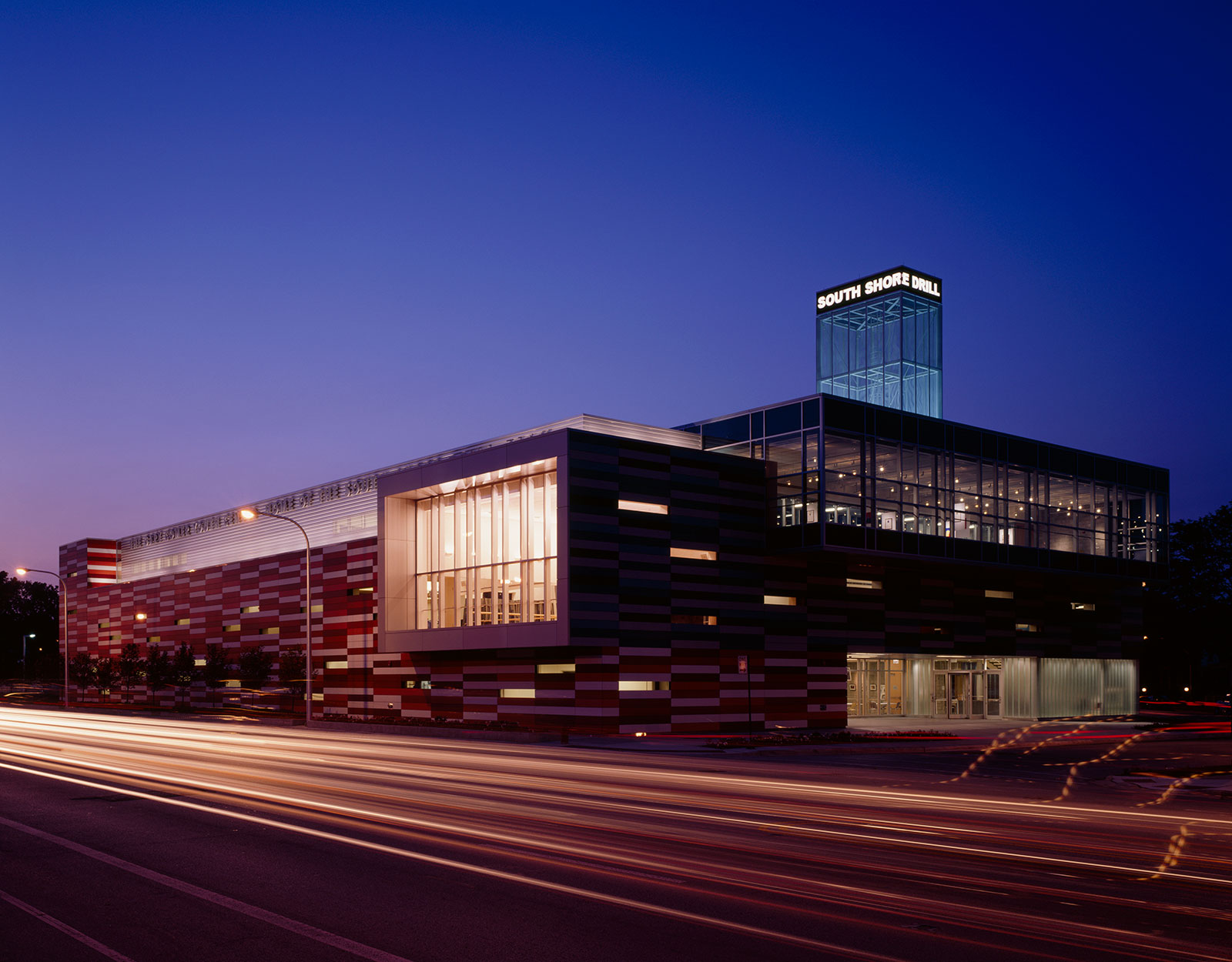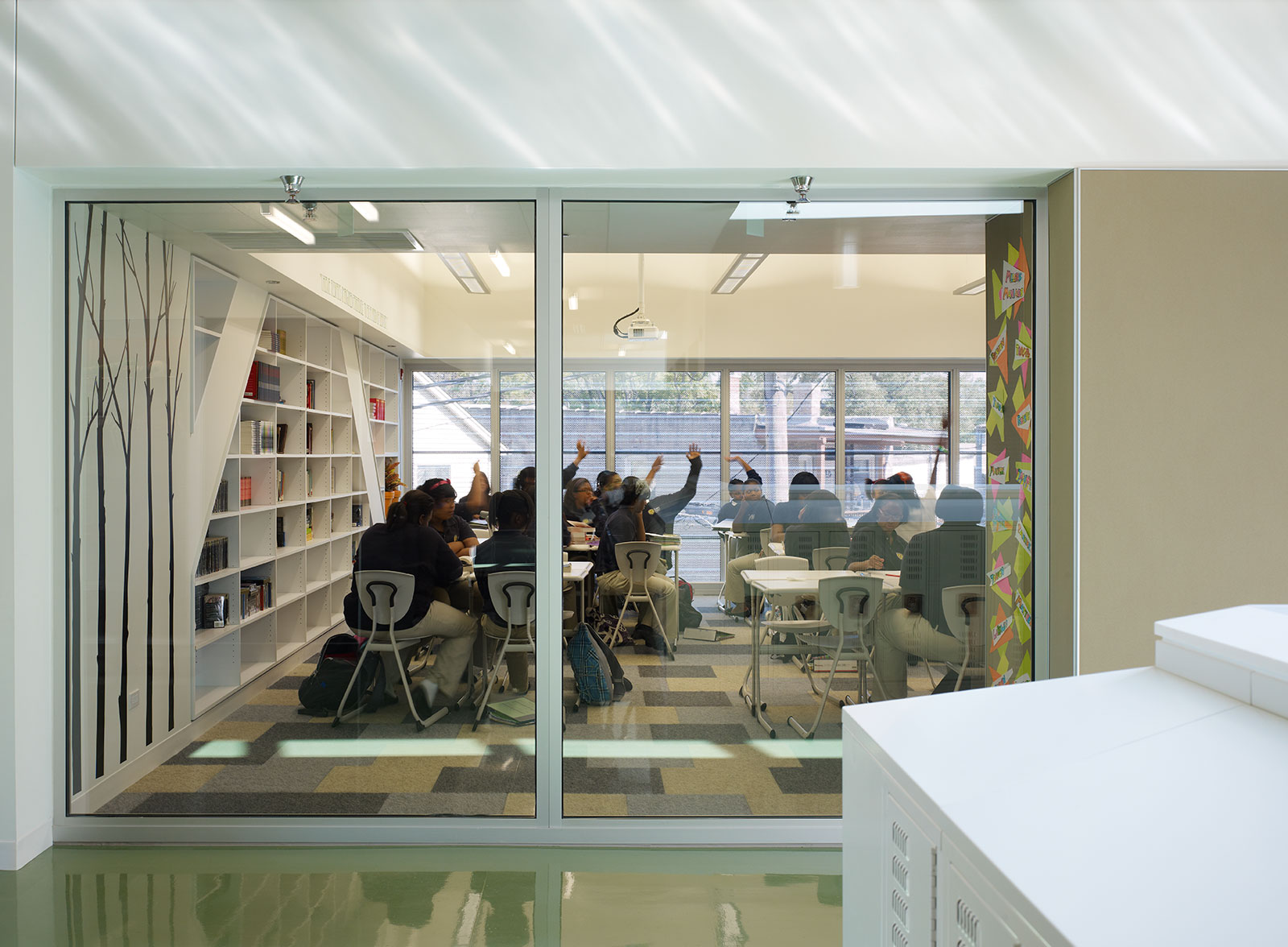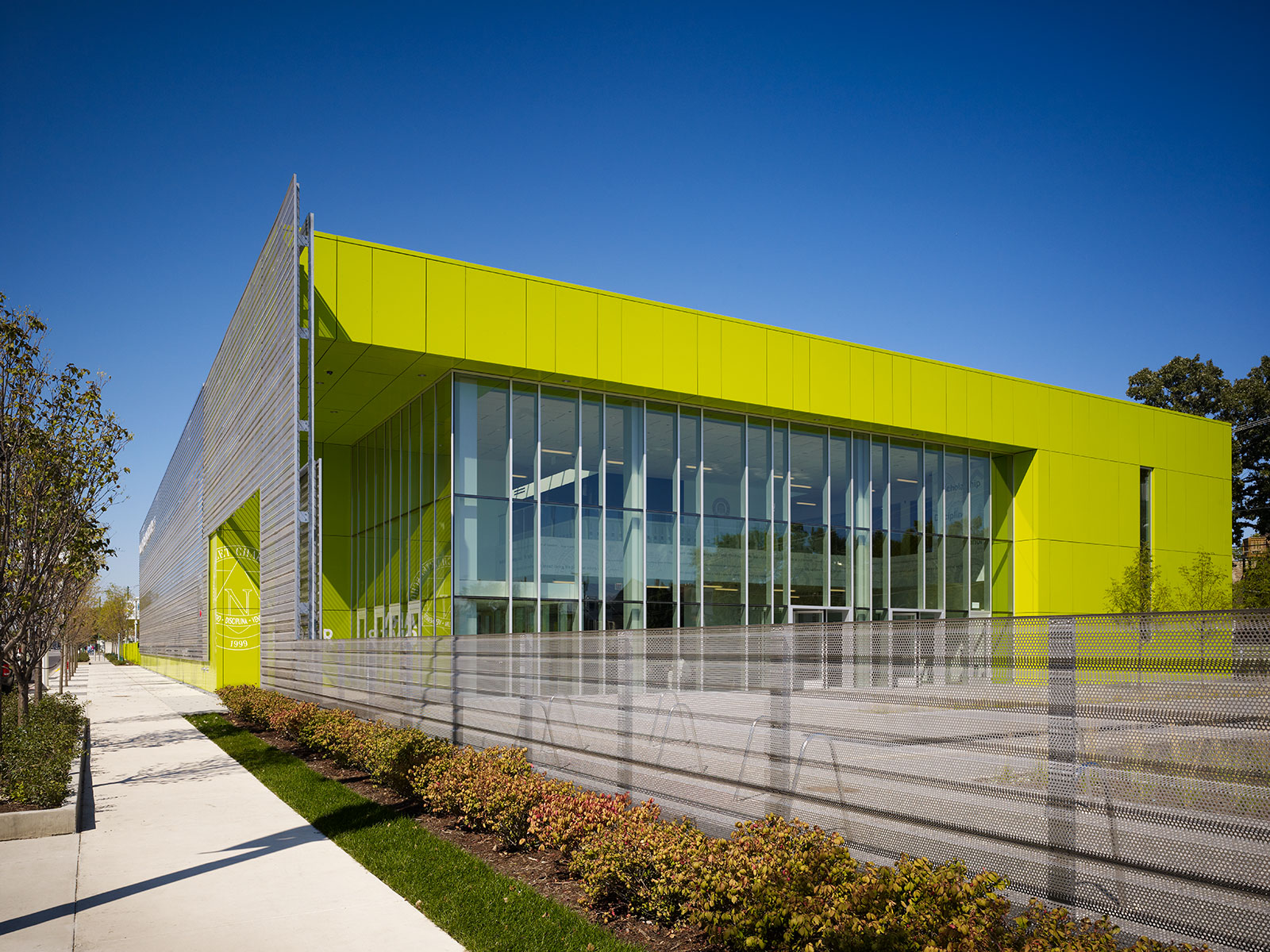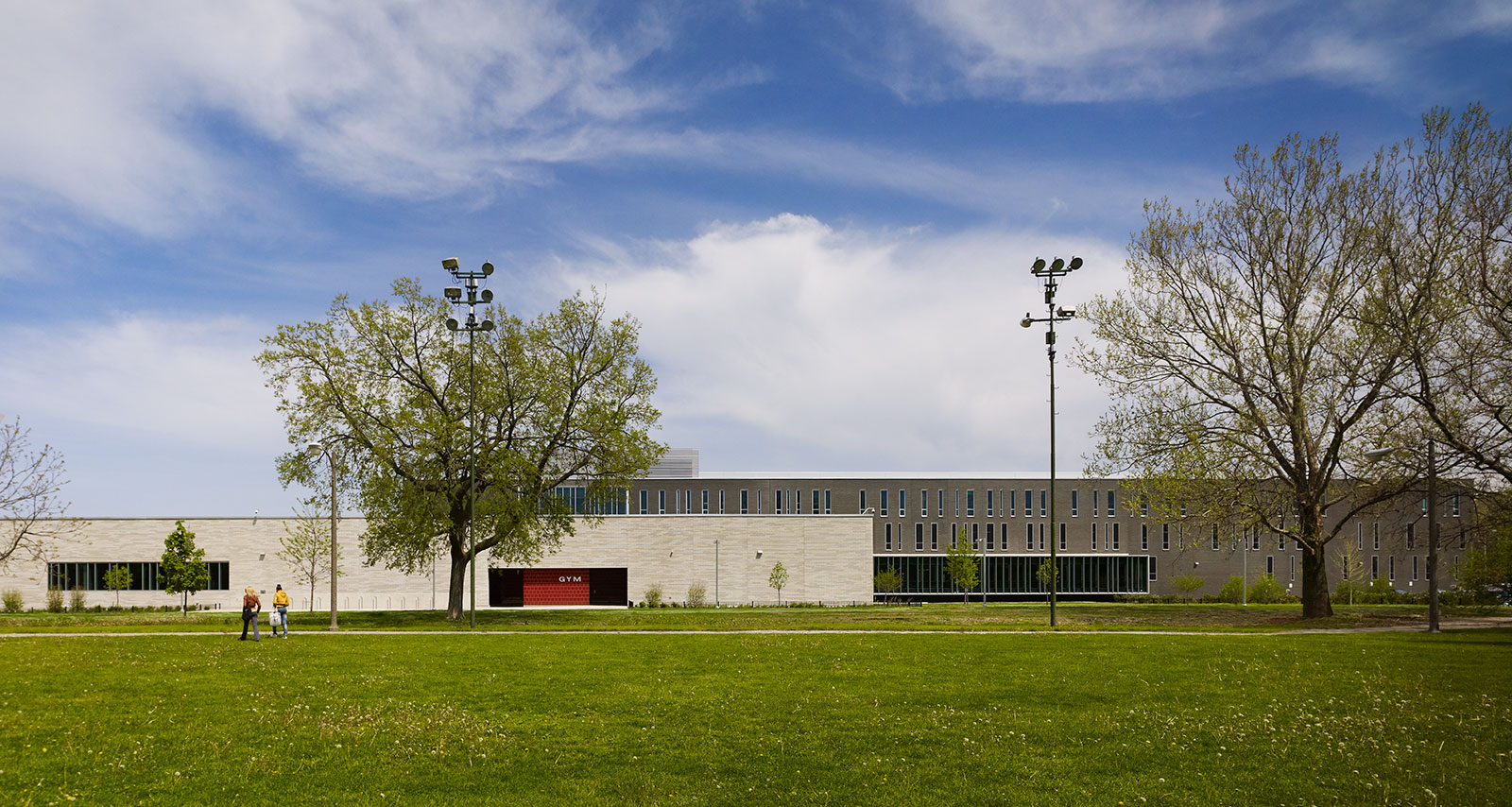
[Photos by Steve Hall]
Ten years ago we checked in with Chicago architect John Ronan, who was making a marked impact on civic and institutional architecture. We admired his ability to get in the trenches and create designs that positively affected people’s lives. His work with schools, community centers, and foundations is positively contributing to the built environment in significant ways, and he was kind enough to elaborate on his process with us. We hope you enjoy this conversation from our archives.
We’re big fans of Chicago—perhaps more so than other cities because architects seem to be regarded with high esteem there. Has that been your experience?
Yes and no. Chicago is a place that has a lot of important architecture, and people here respect that legacy; but while Chicagoans take pride in architecture, it’s a double-edged sword. Architects in Chicago aren’t necessarily freer to explore than in other cities. There is a hardcore pragmatism that prevails here, which sometimes leads to expediency in matters of design and construction. Perhaps this is derivative of the economic players in town — insurance companies, financial institutions — that don’t have a big appetite for risk. As a result, you have to make pragmatic arguments to get your ideas accepted. On the bright side, this mindset produced the Chicago School, whose architects could pull art out of a culture of pragmatism.
Your website states that “design starts by cultivating an awareness of the realities of each project.” Do you have a standard method for gathering the factors of the diverse range of projects we see coming out of your studio?
It begins with a research period. We look into anything that may have bearing on the project, whether it’s the site, environment, or other less obvious factors — the situation of the project — which include the sociological and historical aspects, for example. It involves asking questions and digging. Why is this being built here or now? What are the economic or social factors, and how do you make these characteristics part of the story? Usually you’re given a loose outline of a project, so you have to dig a little to determine how it really came about.Then we assess what the dominant and recessive forces are that will impact the design. We weigh each factor according to the degree they should influence the work, and order them in a project-specific way. The exciting aspect about this process is that it changes from project to project, and there’s detective work involved, which makes it interesting and fun.
Your work focuses less on problems and solutions and more on the natural outgrowth of an evolutionary process. Does this imply that there is a “right” place for a project to end up?
Our methodology is very iterative, and it’s rarely the case that there is only one way to do something. There have been a few projects in which we’ve locked onto something right away because it seemed obvious, but typically we look at many possibilities and then let the forces of the project narrow the variations. The goal of the process is to almost make it look like it wasn’t designed; we should arrive at a point where the design is invisible and not constantly referring back to the author; at the same time, it should look so natural that people might think why would you do anything else? The goal is to get to the point where the design feels intuitively correct.
How do you vet clients? Distinguish the ones who want to go on the journey of architecture from the ones who don’t?
As an architect, you’re interviewing the client as they’re interviewing you. We like to explain to potential clients how the journey of discovery unfolded with other projects, and if they’re open-minded, they’ll be willing to explore. Some clients come in with a fixed idea of what their project should be; we try and stay away from those. It’s important to make clear what you’re interested in exploring with them.
Your projects are in some pretty gritty neighborhoods, such as the South Side. Do you take the viewpoint that good architecture can solve social problems?
No, I don’t think so. It’s a naïve notion that architecture is the answer to social problems. Sometimes I see these architectural ideas competitions and wonder: is more architecture the answer? Look at Chicago—the low-income housing projects built after the war, which everyone thought were a great idea at the time, are now being torn down. The profession lost credibility for this, and rightly so, but everything can’t be blamed on the architecture; some problems stemmed from policy decisions. I think it’s as equally misguided to think that architecture was the sole cause of these failed projects as it is to think that architecture offers the singular solution to these same problems. What architecture can do is provide support for a community to turn itself around. The Gary Comer Youth Center is a good example. It brought together different groups and provided something tangible to rally around, which in turn revitalized the community. It’s anyone’s guess as to how the architecture’s quality factors into the social success of a project. In this case, the architecture played a role in bringing attention to the needs of the community, but was it the reason for the success? That’s questionable.
You’re dealing with project types in some of the worst hit sectors of the US economy, namely public schools. And yet, you’re producing capital A architecture. How are you enrolling school administrators to explore design possibilities in such tough times?
We’ve now completed schools for a variety of organizations, and we aim to generate designs that reflect and shape the culture of that school because they’re all very different. We were designing two schools a few years back that were only a mile apart geographically, but a million miles apart in culture and educational approaches. The cultures of Gary Comer College Prep and South Shore High School are both valid, and each deserves an individual response. Comer Prep wanted to incorporate a philosophy of transparency and accountability into the design, so there is glass between corridors and classrooms. This wouldn’t fly in a public school because of security concerns. While it doesn’t get talked about much, security is a defining factor in school design in urban areas. Security is a pre-condition for learning; you have to feel safe to be able to concentrate on learning, and it’s hugely important in these schools where shootings occur in the neighborhood on a daily basis. For example, the South Shore High School was designed with clear sight lines so public areas could be supervised by security staff. Comer Prep had a gated plaza off the street where students could socialize before and after school without worrying about street violence.
Architectural Record recently interviewed students at South Shore Public High School. What’s it like having 1,200 young critics of your work?
The concerns and expectations are so different sometimes. The students come at it from such a different perspective, it’s enlightening, and I learn a lot each time. I remember a writer for Metropolis came to the Gary Comer Youth Center to do an article after the opening. He asked one of the children what he liked best about the building, and the kid responded that he didn’t have to worry about being shot there. At South Shore, they think the lockers are too narrow.
Your academic projects give students an inspiring and modern impression of design at a young age. Are there examples of the buildings themselves becoming a part of the education?
I hope so. I hope architecture is important to them, and that they understand the role that architecture plays in their education. While designing the South Shore High School, I was very aware of what the city had been building prior to that. There was a design trend in the 80s and 90s that tried to make schools fun for kids. The thinking went: Let’s figure out what kids like and give them that; then they’ll like school. They determined that kids like to go to the mall, so the thought was to make a school that looks like a mall. This was absolutely the wrong direction to take, and what I was trying to do was restore some dignity that had been lost, creating a building in which students felt important when they walked in the door. The design of a building communicates how we feel about the people who use it. The architecture of South Shore High School communicates the values of dignity, hard work and discipline.
You recently won the AIA’s National Honor Award for your Poetry Foundation in Chicago. What’s it like working with a bunch of poets?
It was a unique and memorable experience because poets are willing to go into unfamiliar territory; they’re willing to take risks. Poets employ words that everybody understands, but they use them in new ways that make language unfamiliar. With design, they were comfortable venturing into unknown territory, which requires a certain courage that not every client has. It’s always great to engage with someone that’s willing to take a risk, and help create something they haven’t seen before.
That’s the hardest thing about practicing architecture in America. There are many forces and agents that discourage risk-taking, so it’s unusual and refreshing to find a client who’s willing to go on the adventure of design. It goes back to your first question.
There’s a dangerous amount of non-billable work that needs to be done in order to get the type of work you do (responding to RFQs, submitting proposals, competitions, general marketing). How do you decide where to invest your time and energy?
You only have a certain amount of energy, so you have to be selective about what you expend it on. It has to be worthwhile. We ask ourselves: even if we don’t win this competition, will the office grow or will we get something out of this? We also undertake a number of speculative projects in order to explore an issue or a material. We typically get more out of these projects than competitions.
More and more, because of the current economic times, owners and program managers are getting comfortable asking architects to do work upfront before getting the job. I’m hoping it doesn’t become a structural change — a new normal — because that would be very destructive to the profession.
Where do you see your firm going and what’s ahead for you?
There are forces at work in the profession that are pushing architects into an operating mode in which the task of the designer is about selecting rather than designing. I would like to resist that. The direction that I’d like to go is toward an architecture in which all the elements of a building are designed in a considered way, and use technology not to dumb down the design and make its production more expedient, but to make it more special, thoughtful, and unique.
What’s on your nightstand? What are you currently reading?
David Foster Wallace’s The Pale King, which was the novel he was working on when he died.
 John Ronan is founding principal of John Ronan Architects in Chicago. He holds a Master of Architecture degree with distinction from the Harvard University Graduate School of Design, and a Bachelor of Science degree from the University of Michigan. In December 2000, John was named as a member of the Design Vanguard by Architectural Record magazine; and in January 2005 he was selected to be in The Architectural League of New York’s Emerging Voices program. His work has been exhibited in galleries throughout the US, including the Graham Foundation, the Art Institute of Chicago and The Architectural League of New York Urban Center, and has been featured in numerous international publications. His firm has been the recipient of two AIA Institute National Honor Awards. A monograph on his work, Explorations (Princeton Architectural Press) was released in 2010. John is currently Professor of Architecture at the Illinois Institute of Technology College of Architecture, where he has taught since 1992.
John Ronan is founding principal of John Ronan Architects in Chicago. He holds a Master of Architecture degree with distinction from the Harvard University Graduate School of Design, and a Bachelor of Science degree from the University of Michigan. In December 2000, John was named as a member of the Design Vanguard by Architectural Record magazine; and in January 2005 he was selected to be in The Architectural League of New York’s Emerging Voices program. His work has been exhibited in galleries throughout the US, including the Graham Foundation, the Art Institute of Chicago and The Architectural League of New York Urban Center, and has been featured in numerous international publications. His firm has been the recipient of two AIA Institute National Honor Awards. A monograph on his work, Explorations (Princeton Architectural Press) was released in 2010. John is currently Professor of Architecture at the Illinois Institute of Technology College of Architecture, where he has taught since 1992.






